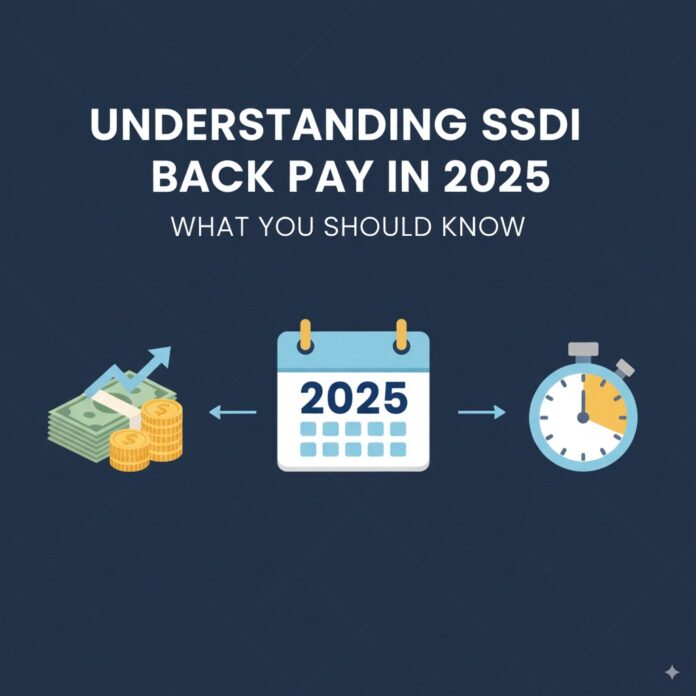If you’ve recently been approved for Social Security Disability Insurance (SSDI), congratulations. The process can be long, frustrating, and even discouraging at times—so reaching approval is an accomplishment worth celebrating.
But once the relief sets in, another question often comes up: What about back pay?
You’re not alone in wondering how it works, when you’ll get it, and what to expect. The good news is that SSDI back pay can provide a valuable lump sum to help cover the time you’ve spent waiting.
What Is SSDI Back Pay?
Back pay is the money owed to you for the time between when your disability officially began and the date your benefits were approved.
Because many applicants wait months—or even years—for a decision, the Social Security Administration (SSA) adds up all the benefits you should have received and issues them as a lump sum payment.
For some, this may be a few thousand dollars. For others, it could be tens of thousands.
How Is SSDI Back Pay Calculated?
Three main factors determine your back pay:
-
Established Onset Date (EOD): The date the SSA decides your disability began.
-
Five-Month Waiting Period: By law, the first five months after your EOD don’t count toward payments.
-
Approval Date: Back pay covers the time from the end of your waiting period up to the date your benefits are approved.
Example:
If your disability began in January 2023, your five-month waiting period would end in June 2023. If your claim was finally approved in March 2025, you’d be owed back pay covering June 2023 through March 2025—21 months of missed payments—paid out at once.
What’s New in 2025?
A major update this year: the Social Security Fairness Act of 2025. This law eliminated the WEP (Windfall Elimination Provision) and GPO (Government Pension Offset) rules that previously reduced benefits for people with certain public pensions.
That means retirees, teachers, police officers, firefighters, and others may now receive higher SSDI payments—and in many cases, extra back pay, even if they were already on benefits.
If you think this may apply to you, it’s worth contacting the SSA or a benefits advocate for a reassessment.
How Will You Receive SSDI Back Pay?
Most beneficiaries get their back pay within 60 days of approval. Payments are usually deposited directly into the bank account you set up with SSA.
-
If you applied for direct deposit, the money will arrive automatically.
-
If you qualify for both SSDI and SSI, your back pay might come in installments over six months rather than a single lump sum, depending on the total amount.
How to Check the Status of Your Back Pay
You have several options to track your payment:
-
Online: Create a my Social Security account at ssa.gov/myaccount.
-
By phone: Call the SSA at 1-800-772-1213 (have your Social Security number and approval details ready).
-
Mail or bank alerts: Sometimes the first notice is the deposit itself before you receive a letter.
-
Through your advocate: If you worked with a disability attorney or advocate, they can check your payment status for you.
What If You’re Still Waiting?
If it’s been more than 90 days since approval and you haven’t received your back pay, delays can happen—especially if your case involved appeals or multiple agencies.
Steps you can take:
-
Call your local SSA office for an update.
-
Double-check that your contact and banking information are correct.
-
Request a written status update.
Persistence (and politeness) can make the process smoother.
Final Thoughts
Approval for SSDI is the end of one long process, but also the beginning of a new chapter. Back pay is your right—money intended to help you catch up after months or years of waiting.
Whether you use it to pay down debts, cover bills, or simply create a financial cushion, this support is meant to bring stability and peace of mind.
You’ve already done the hardest part. Now it’s time to make sure you receive everything you’re owed.
Disclaimer: Triviabright.com is a privately owned platform and is not affiliated with or endorsed by any government agency. The information provided here is for general educational purposes only and should not be considered legal or financial advice. Assistance programs and government policies change frequently, so we encourage readers to consult official federal or state sources for the most up-to-date guidance. We do not process applications for government programs, nor do we guarantee eligibility or approval.

